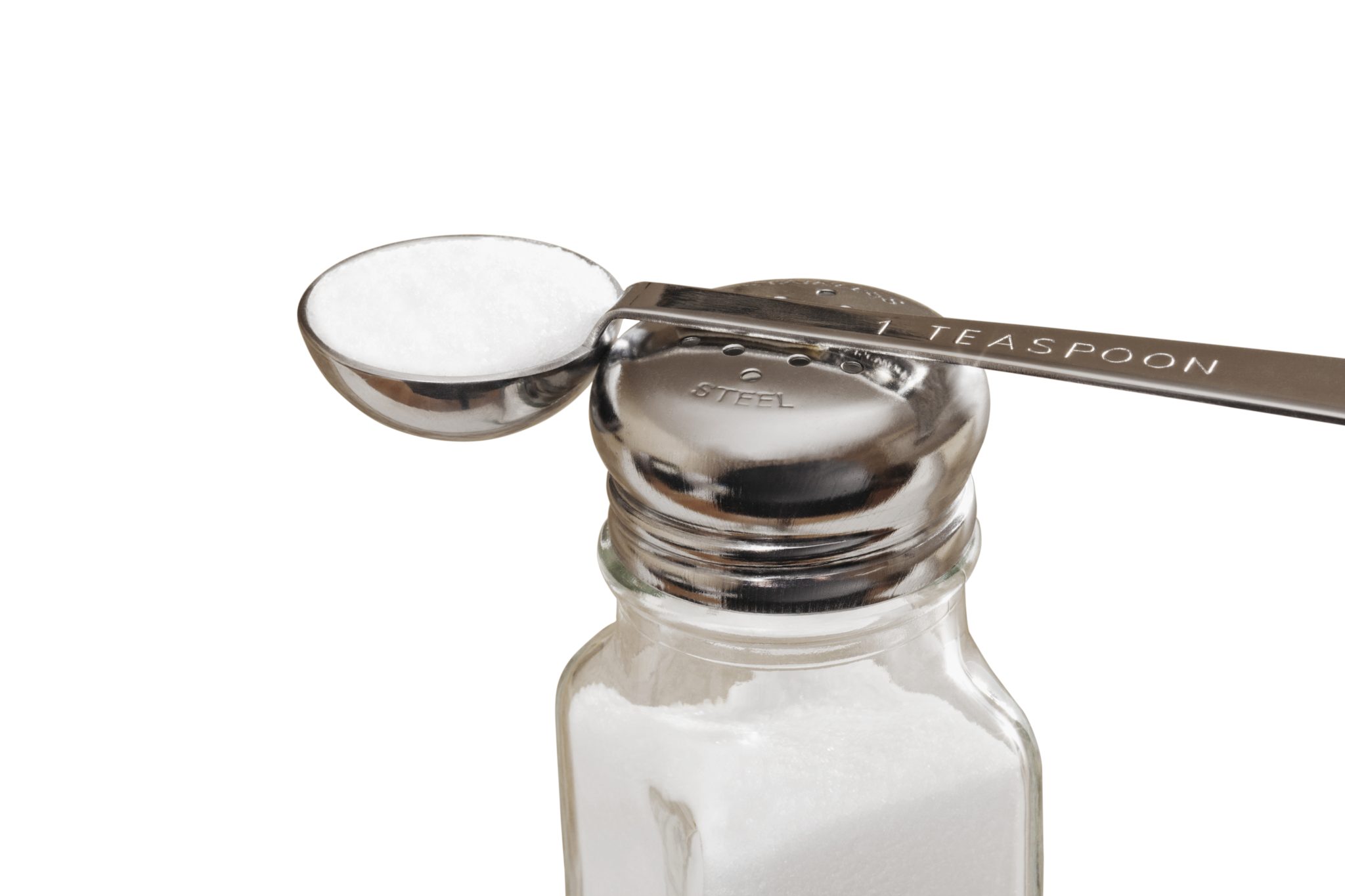Health & Nutrition

Do you ever think about how much sodium is in your food? The answer is probably no because sodium enhances the taste of food. Sight and smell are some obvious factors that attract people to food. However, the taste of food is what people will find most appealing. When food is described as bland, many people will add salt, which contains sodium, for flavor, despite not knowing the amount of salt already added. For good health management, it is important for people to closely watch their sodium intake and not exceed the daily recommendations.
Know Your Risks
Sodium is a mineral included in salt (sodium chloride). Salt and sodium are used interchangeably by many people, but they are not quite the same. Sodium is needed to regulate bodily fluids and to help with muscle and nerve functions. Excessive sodium consumption may cause swelling in fingers, legs, and feet because a body holds water to dilute the sodium. This can place more pressure on the kidneys, heart, and blood vessels. Over time, excessive sodium intake could result in medical conditions, such as hypertension, heart attacks, and strokes. It is important to provide education on proper sodium intake levels at an early age. Over 95 percent of children 2 years and older consume excessive amounts of sodium daily. Most adults, and the African-American population, do so as well. Talk to your doctor about sodium intake and monitoring blood pressure rate.
Sodium Recommendations
The recommended daily sodium intake is between 1500 and 2300 mg, which is equivalent to one teaspoon. The average person consumes twice that amount, 3400 mg or more per day. So how does so that much sodium end up in foods? Seventy percent of sodium in diets comes from pre-packaged, processed, and restaurant-prepared foods. Besides adding to the taste of foods, food manufacturers use sodium to reduce the harmful growth of microorganisms and to increase the shelf life of food products. Restaurants, on the other hand, add sodium to foods, which makes it more challenging for consumers to monitor their sodium intake.
New Sodium Guidelines
The United States Food and Drug Administration recently announced new guidelines to decrease daily sodium intake by approximately 12 percent, with the expectation of decreasing the risk factors associated with heart disease and stroke. These guidelines include recommendations to food manufacturers, restaurants, and foodservice companies to reduce sodium content in prepackaged, processed, and restaurant prepared foods. Although the guidelines are considered by medical experts to be a great step toward the better overall health of the average person, there are concerns the guidelines will not be enforced. Manufacturers, restaurants, and foodservice companies must voluntarily comply. Therefore, it becomes critical for consumers to know what they can do to reduce sodium or salt intake to improve health.
Shake the Salt Habit
Read the Nutrition Facts label. Twenty percent or higher of the percent daily value is considered too high.
Prepare foods at home. Use herbs, spices, and low-sodium seasonings in recipes to add taste and flavor instead of salt.
Reduce the use of prepackaged and processed foods. Use dried pasta, beans, and rice instead of prepackaged, flavored items.
Pour the preserving liquid off canned food products, such as beans and vegetables, and rinse to remove some sodium.
Eat fresh fruits and vegetables. Replace prepackaged, processed snack foods with fresh fruits and vegetables.
Drink more water. Some flavored drinks can contain 12mg of sodium. Depending on the flavor and serving size, more than five times that amount can be present.
More Information
Check out this great low-sodium Cheese and Corn Chowder recipe from the United States Department of Agriculture’s MyPlate website. For more information, visit www.aces.edu for additional recipes and information on healthy eating.

